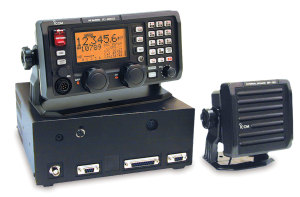A friend of mine with great HF radio experience shared this info with me after helping him construct a vehicle mounted dipole antenna.
The following is a breakdown of the HF band with a general description of the behavior of each segment.
- 2 thru 5 MHz: This band is useful during daylight hours for intermediate and short-range skywave communications and good for long range (several thousand miles) at night. The static level is highest during the summer.
- 5 thru 10 MHz: This band is similar to the 2 thru 5 MHz band, except long-range communications are possible during daylight hours under good conditions. The signals follow the darkness path bet, and during winter it is possible to communicate with stations on the other side of the world. The winter months are better than the summer months because of the high summer static level, especially in equatorial parts of the world.
- 10 thru 15 MHz: This band is the best for reliable intermediate and long-range communication during all propagation conditions. During very low levels of sunspot activity, the band will not be useful at night but improves greatly at dawn and holds until dusk.
- 15 thru 25 MHz: This band is highly variable and quite dependent on sunspot activity. When conditions are good, it will be useful during day and early night, but if sunspot conditions are poor, it may not be useable at all. This band is suitable for short-range surface wave communications using a whip antenna.
- 25 thru 30 MHz: This band is used for very short-range communication and is excellent for long-range communications during good propagation conditions. It is generally unusable for intermediate range communications.


Leave a Reply